You probably already use social media to elevate your brand presence or connect with your customers. But you can use it to achieve more than that.
You can set up a full-fledged store on social media, where you can do everything just like in brick-and-mortar stores. From product research to the final purchase, your customers can go through the entire sales funnel stages on social media. This is social commerce.
Over 43% of consumers use social media to find products and services to purchase. So, considering the number of sales this channel promises, taking advantage of social commerce should be a no-brainer.
Read on to find out what social commerce is all about.
Content:
What is social commerce?
Social commerce is the use of social media channels to buy and sell products. It allows customers to navigate the purchase journey of brand discovery, product research, and purchase without leaving the platform.
For instance, let’s assume you’re scrolling through your Instagram feed, and you see an ad for a product you want. Underneath, you’ll find a CTA to view a shop or shop now. You can click on this button, add the product to your shopping cart, and check out all in the same place.

The benefits of social commerce don’t end after the purchase. You can nurture your customers into brand advocates with after-sales services, too.
Three benefits of social media for your business
Are you still skeptical about buying into the social commerce and social media trend? Here are three benefits to prove it’s worth every sweat and penny.
Reach your target audience effectively
There are approximately 4.59 billion people on social media. Thus, these channels expose you to a sizable population of your target audience. Even better, they feature a wealth of customer data, from their preferences and behaviors to demographics.
As such, you can fine-tune your ads using ultra-specific criteria. Using social media advertising, you can bring your product to the viewing pleasure of those who desire, appreciate, and eventually buy it.
For example, you can use advanced audience targeting on Facebook or Instagram ads manager. This feature allows you to capture highly qualified leads using different criteria such as audience behavior, interests, location, and others, as shown in the image below.

You’ll find similar features on Snapchat, TikTok, and other social media platforms. With these, you can seamlessly market and sell your products and services directly to your ideal audience.
Create frictionless purchasing experience
Innovative features such as social media chatbots, in-app checkouts, shoppable ads, straightforward buy buttons, seamless customer support, etc., make social media buying a seamless experience.
For one, you can implement the in-app checkout option. With this, your customers can easily select a product, set their specifications, and pay without leaving the app. Here is an example from Instagram.
When they eventually make these purchases, these apps help you further notify them about delivery and shipping updates.
When they eventually make these purchases, these apps help you further notify them about delivery and shipping updates.
You can also use third-party apps to make the purchasing experience as smooth as possible. For example, Soldsie allows customers to buy your product just by typing the word “sold” into the product’s comment section. After commenting, the app automatically emails users an invoice to complete their checkout.
Another way you can offer a frictionless online shopping experience is by using chatbots. They allow your customers to easily find, buy products, and check out.
For example, the Facebook Messenger chatbot Supertravel helps customers locate good hotel deals and complete the booking within Messenger.
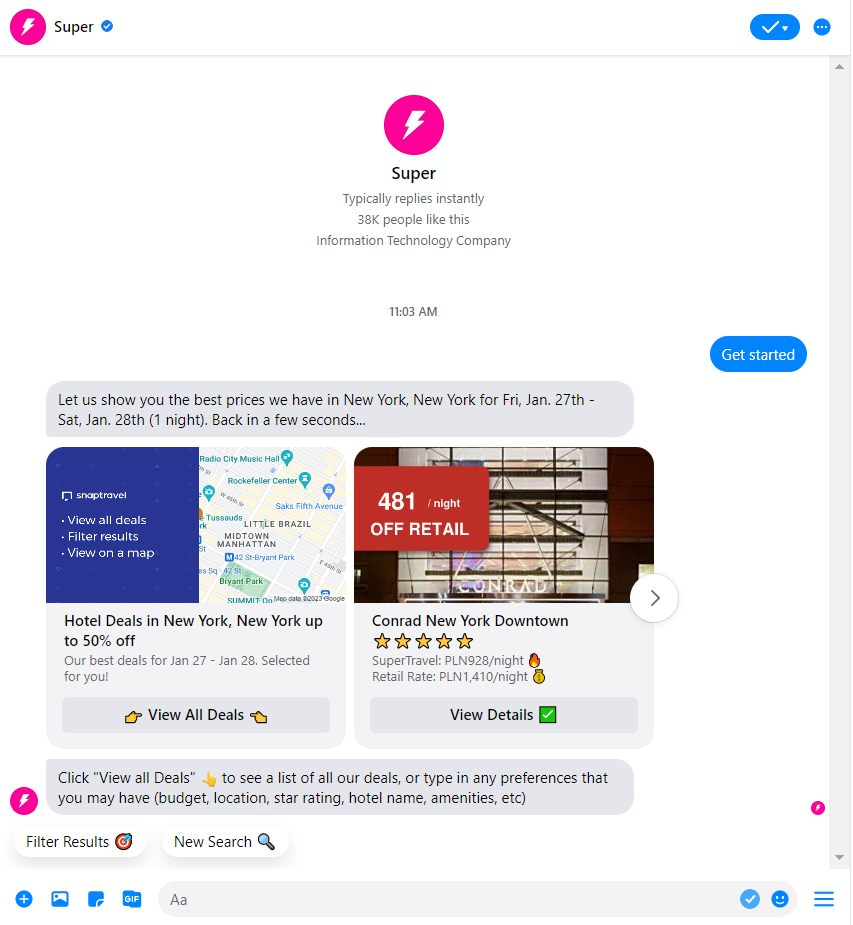
With social commerce, your customers will remain on the social media application throughout their customer journey. This gives them a level of convenience. Research shows 76% of customers view convenience as their priority when making a purchase.
Receive feedback from customers
Social media offers a great means to reach customers directly. So, you can use it to get feedback from them.
To get this feedback, you can use polls or surveys.
Using Instagram poll stickers, you can post questions on Instagram Stories with yes/no or percentage-based answers, like in the image below. This is a great way to understand your customers’ satisfaction and preferences.

You can also use the Facebook chatbot survey feature to collect feedback from your customers and potential customers. Here’s an example:

You can also opt for the traditional way. Just publish a post asking your customers how they feel about specific products, as Waves Car Wash has done below.

You can implement the insights from this feedback to tailor your offering to your customer’s demands. You’ll better understand your product defects and features that resonate with your audience. As such, you will be better positioned to create an effective retail, B2C, or B2B SaaS marketing strategy, whichever applies.
Three popular social commerce platforms to use
Three major social channels currently lead in the social commerce ecosystem because of their exceptional functionalities. These are Facebook, Instagram, and Pinterest.
Social commerce platform #1 Facebook
Facebook has the most seamless social commerce tool, Facebook Shops. An average of one million people use Facebook Shops every month, allowing you a broad audience reach.
Before attempting to set up a shop on Facebook, be sure to comply with Meta’s commerce policy.
That said, here’s how you can set up your Facebook shop:
- Visit the Meta Commerce Manager. Log into your Facebook account and click on get started.
- Select your preferred checkout method. You can opt for Facebook or Instagram checkout or via another website.
- Then, pick the Facebook business page you’d like to sell from. If you don’t have a business page, you’ll find the option to create one.
- After creating and connecting your business account, you have to set the locations you deliver to.
- Click on “Finish setup.”
After creating your shop, you can customize it to look beautiful, like the one below.
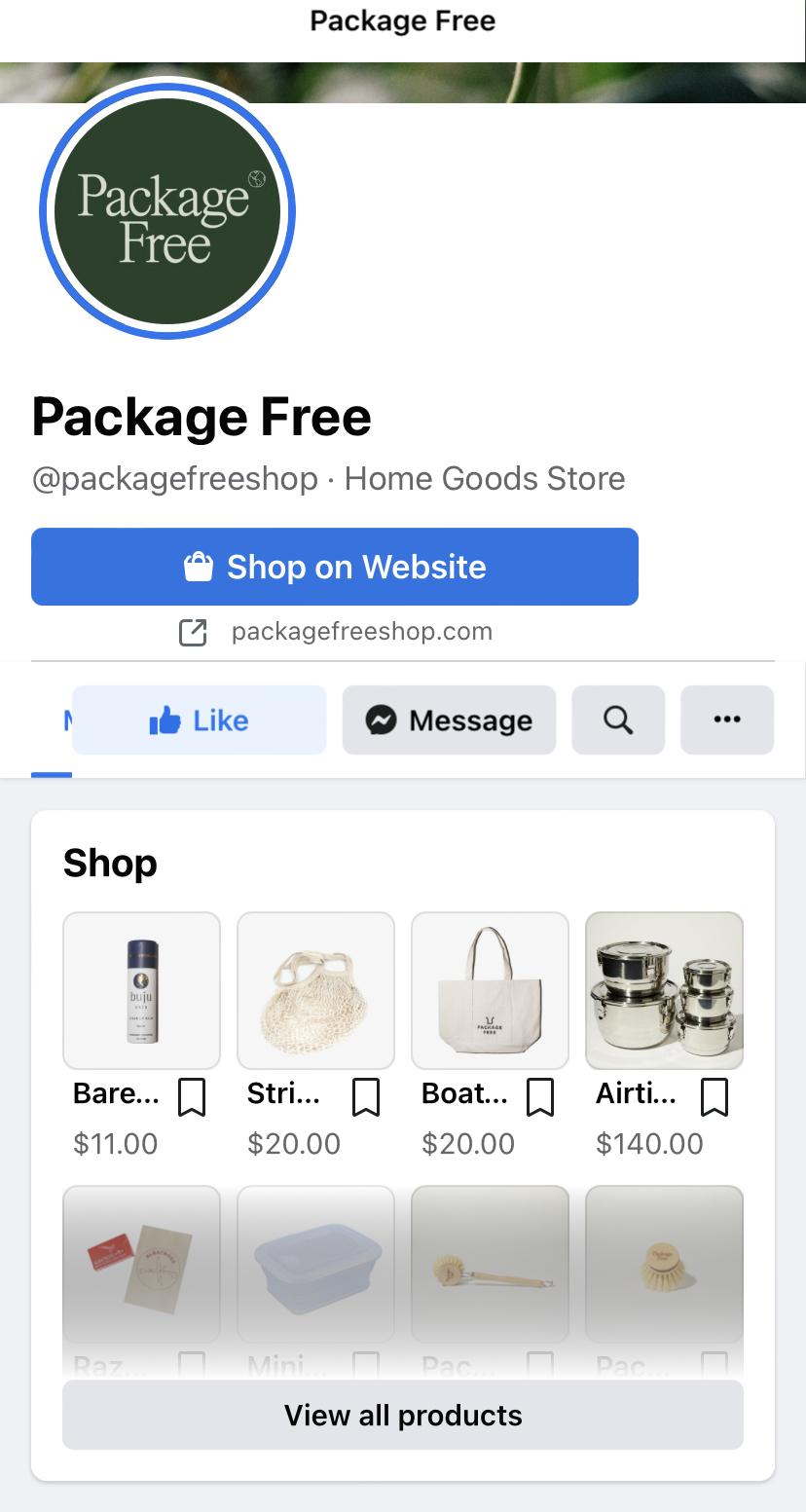
Simply go to your Commerce Manager account and select layout. In the layout section, you can customize the colors and fonts on your posts, profile, and even on your digital business card.
After setting up a Facebook page, you’re more likely to experience an influx of inquiries about shipping, product details, etc. To avoid being overwhelmed, you can use the SendPulse Facebook chatbot to help you answer some of the questions.

Of course, Facebook won’t let you sell for free. It charges 5% for every shipment. However, if the shipment is over $8, you’ll pay a $0.4 flat fee.
Social commerce platform #2 Instagram
Over 130 million users on Instagram tap at least an Instagram Shopping post every month. Thus, Instagram is one of the best places to explore for social commerce.
Before examining how to create an Instagram shop, it’s worth noting that Instagram pulls product catalogs and information from Facebook Shops. So, you must have a Facebook shop if you want to leverage Instagram for social commerce, too.
After creating a Facebook shop, you can switch your Instagram account to a business account. To do this, go to Settings and click on Account. Then scroll to the bottom and select “Switch to professional account.” Click continue.
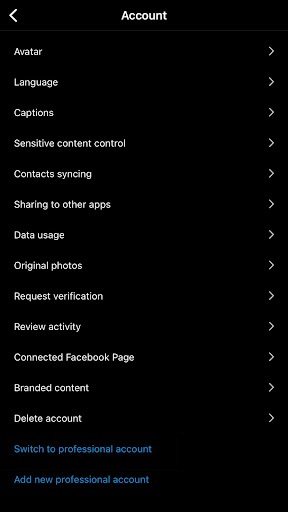
You’ll find the option to choose if you are a creator or a business. Select “Business” and continue.
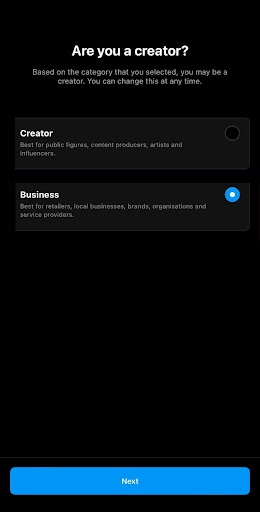
Then, you’ll be asked to connect to your Facebook Business page. Link the Instagram account to your already set-up Facebook business page.
Now, go to the Meta commerce manager to add a catalog to your Instagram Business page. Using the manager, you can include details like product name, description, product images, etc.
Subsequently, submit the account for review. To do this, go to settings and select “Sign up for shopping.” Follow the steps and submit your account.
You can track the review process by clicking on the “Shopping” button in your settings after your submission. After Instagram approves your shop, click on the same “Shopping” button to start selling.
Now, your customers will see your shop like the image below.

Start posting shoppable posts and ads that will lead customers directly to your shop to leverage Instagram for sales.
Social commerce platform #3 Pinterest
Pinterest has established itself as the leading platform for home decor, fashion, beauty inspiration ideas, among others. This makes it a great platform to sell these products.
To create a shop on Pinterest, start by creating a business account. If you already have a personal account, you can go to Account settings and look for Account changes. Then, select “Convert account.”

Once you have your business account, you’ll need a data source. Data source is the same as the product catalog. It is a URL file that contains your product list, and how you want them to be structured.
To add the data source, go to ads and click on Catalogs. Fill out the required fields.

Afterward, select “test your pins.” Then, validate.
After creating a product pin, you have to wait for a confirmation email from Pinterest before proceeding. After getting approved, your pins will appear with the “Shop now” button and product prices.
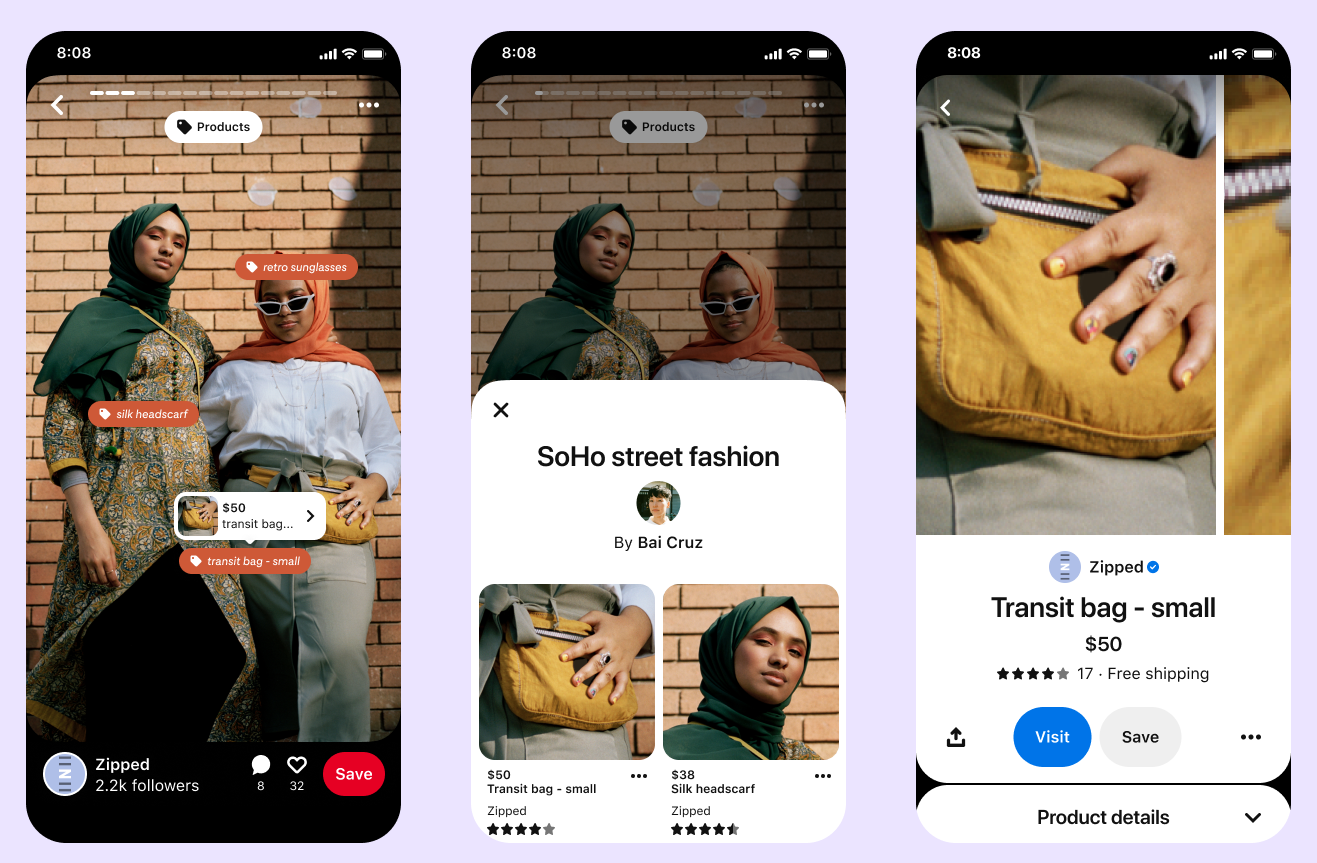
Finally, Pinterest also allows you to use the performance tracking feature to gather insights into customer behavior. This feature helps you measure your success over a period, so you can make adjustments wherever necessary.
In closing
Social media keeps setting revolutionary trends for customers and business interactions. Today, social commerce is the new kid on the block with benefits such as ultra-specific pin-point targeting, a frictionless purchasing experience, and easy ways to acquire feedback. These are necessary to maximize profit for any business.
If you’re looking to get started with social shopping, three of the social platforms you should be exploring are Facebook, Instagram, and Pinterest. You learned how to set up your own shops on these platforms from this post.
So, what are you waiting for? You have everything you need to get started. Leverage social commerce, and your business will reap the best rewards.








